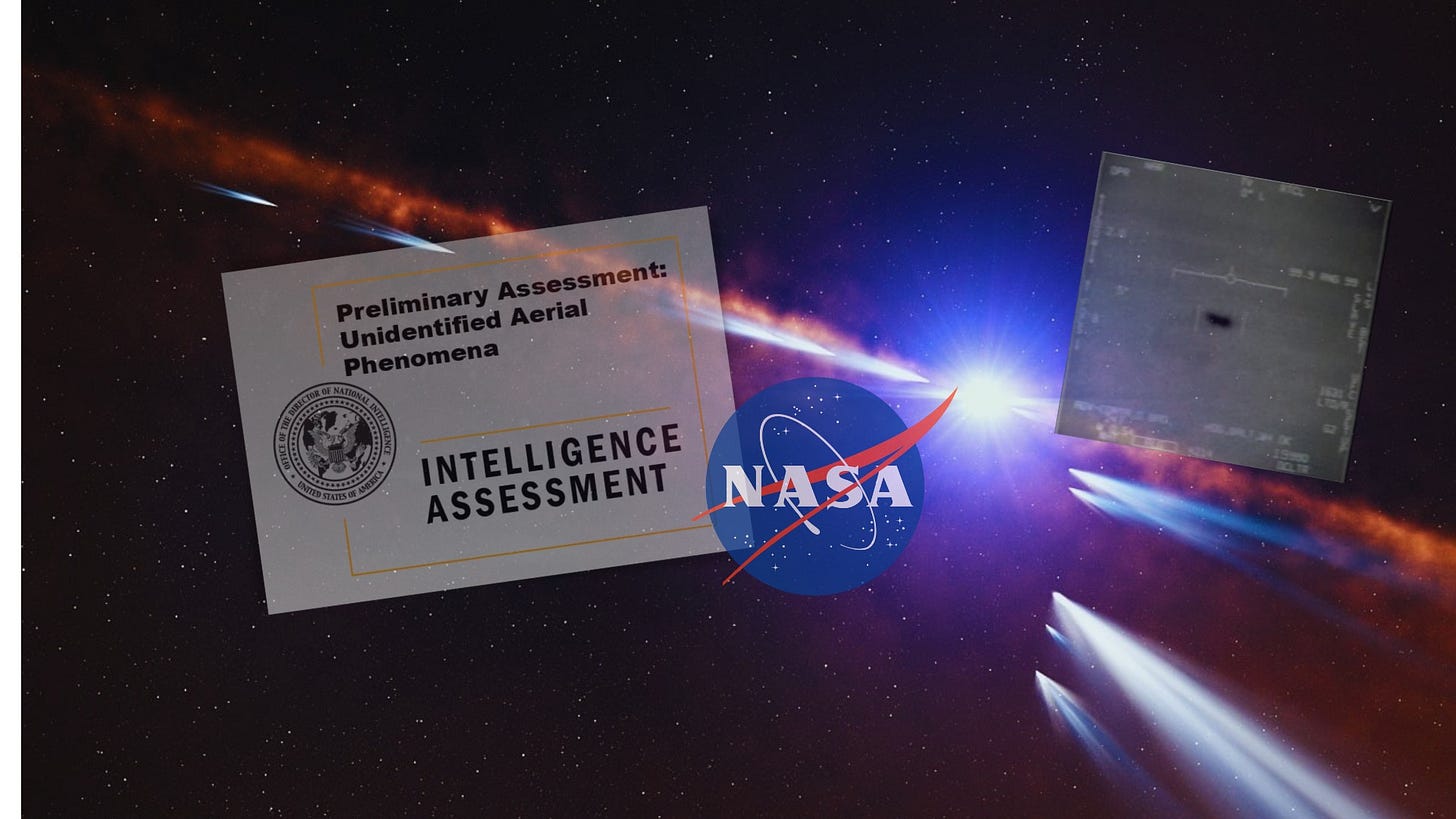
We are in a decade of Transportation Transformation. That's what Full Throttle explores. The newsletter will be delivered twice a week for free once you subscribe here. Follow me on Twitter, Instagram, and Linkedin.
NASA occasionally surprises those of us who cover space and they did just that last week. The agency announced it is jumping into research of Unidentified Aerial Phenomena (UAP), which has been more commonly known as Unidentified Flying Objects (UFOs).
Why the surprise? Because UFOs, in decades past, have been the subject of wild theories and outlandish stories. Military pilots who reported something strange during a flight were often ridiculed.
One of three videos from Naval aviators that the Pentagon released earlier this year. (Credit: DOD)
That has changed in the past few years. We learned the Defense Department had an office studying UAP. That task force has now been replaced by a Pentagon management group. Earlier this year the Pentagon released three videos, captured by Navy pilots, of strangely shaped objects. Some appear to be flying beyond known capabilities.
The Director of National Intelligence released a report on UAP last year saying there are 144 reported sightings that can’t be explained.
Video presented to a House Committee by the Deputy Director of Naval intelligence. There are two frames of an object nearby that are stilled at the end of the clip. (Credit: House Intelligence Committee)
HOUSE HEARING
Just last month, the House Intelligence Committee held an open hearing on UAP. Rep. Adam Schiff (D-CA) said UAPs, “need to be understood as a national security matter.” Members of the committee hope to not repeat mistakes of earlier government attempts to investigate UAP behind closed doors. “Excessive secrecy only breeds distrust and speculation,” Schiff said at the hearing. The military is making a concerted effort to remove the stigma that in past decades may have prevented pilots from reporting strange sightings.
Navy Intelligence provided additional videos at the hearing of unexplained phenomena. The government officials say it’s hard to solve many of these sightings because of a lack of research. Enter NASA.
The Navy's Scott Bray tells House members how some UAP sightings are solved. (Credit: House Intelligence Committee)
NASA WON'T INVESTIGATE, YET
Despite some of the headlines you may have seen last week, NASA is just dipping its toe into this research. The agency won’t be investigating UAP to start with. This effort, to begin early this fall and last about nine months, will only look for data. “The study will focus on identifying available data, how best to collect future data, and how NASA can use that data to move the scientific understanding of UAPs forward,” the agency said.
NASA could move deeper into research of UAP later.
NASA's Dr. Thomas Zurbuchen says the UPA endeavor could yield scientific breakthroughs. (Credit: NASA)
The space agency says it will work independently of the military, and its efforts will be science-based. “We have the tools and the teams who can help our understanding of the unknown,” said NASA’s Associate Administrator for Science Dr. Thomas Zurbuchen. “There’s been many times where something looks almost magical turns out to be a new scientific effect,” he added.
NASA'S REPUTATION
There were worries this move by the space agency could damage its reputation. Is NASA “selling out?” Zurbuchen rejects that saying, “the quality of science is not only measured by the outputs that come behind it, but also the questions we are willing to tackle with science.”
Zurbuchen tackled questions about the UAP research and NASA's reputation. (Credit: NASA)
Many UAP discussions turn to questions of possible alien life, extraterrestrials. Could an intelligent life form explain some of these sightings? Zurburchen says one of NASA’s mandates is to search for life and intelligent life elsewhere in the universe.
INTELLIGENT LIFE?
What does the head of Science for NASA think? Could aliens be responsible for some of the UAP? “I don’t know… I think additional data will really bring us to getting to learn a lot more,” he said, adding, “you need to do the research before you can answer that.”
Zurbuchen's answer to whether intelligent life exists elsewhere in the universe. (Credit: NASA)
(Cover photo image credit: NASA, US Navy, DNI)




